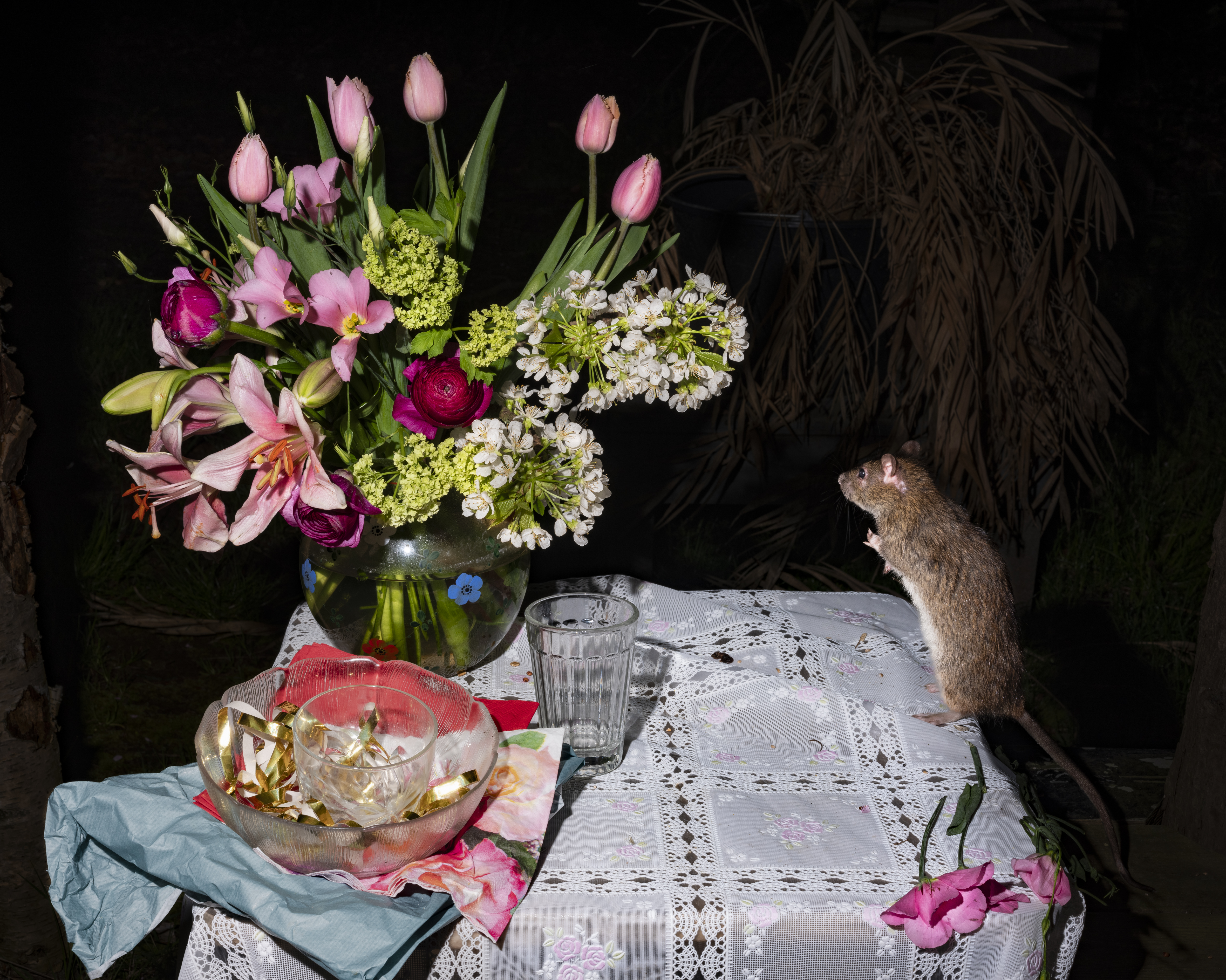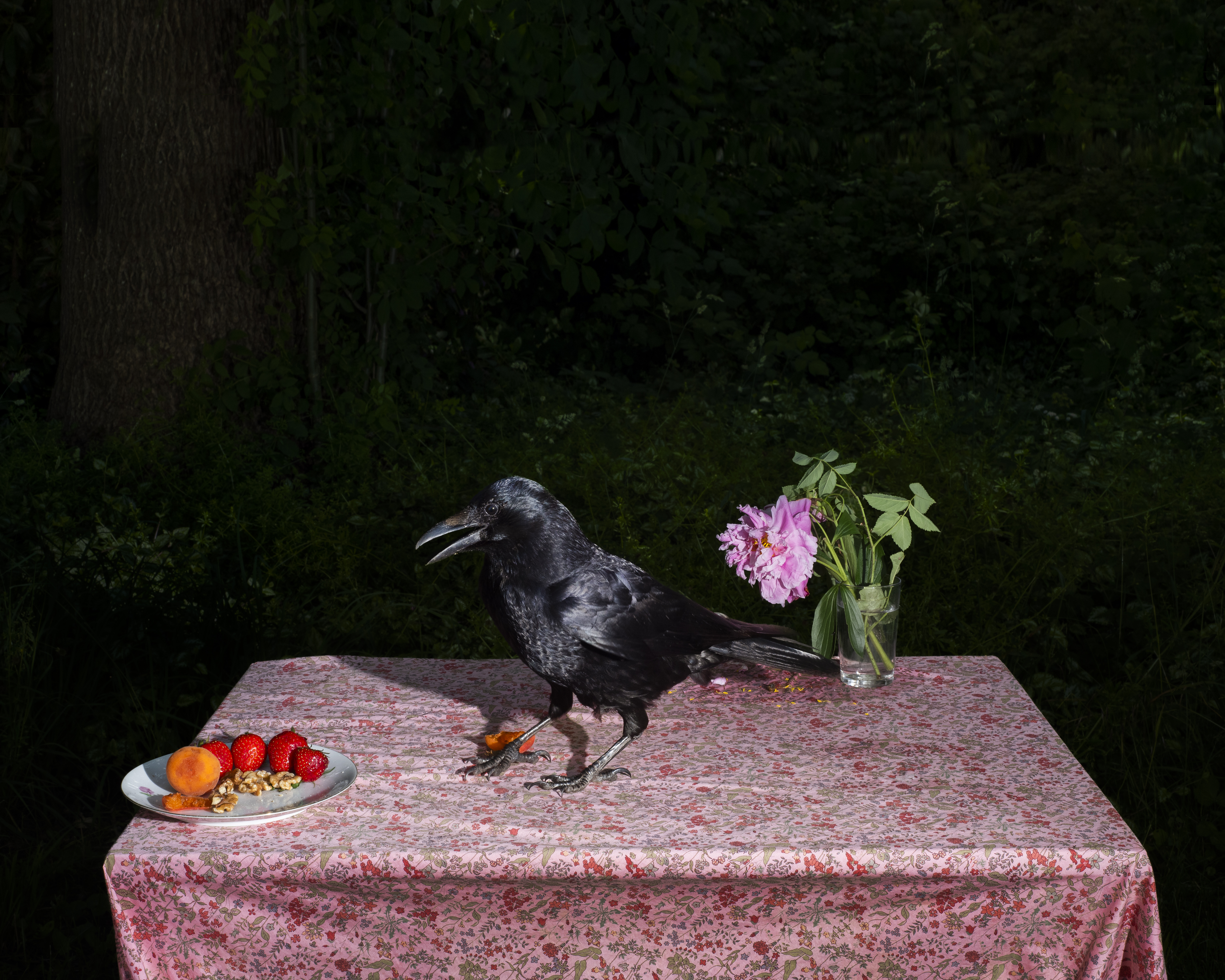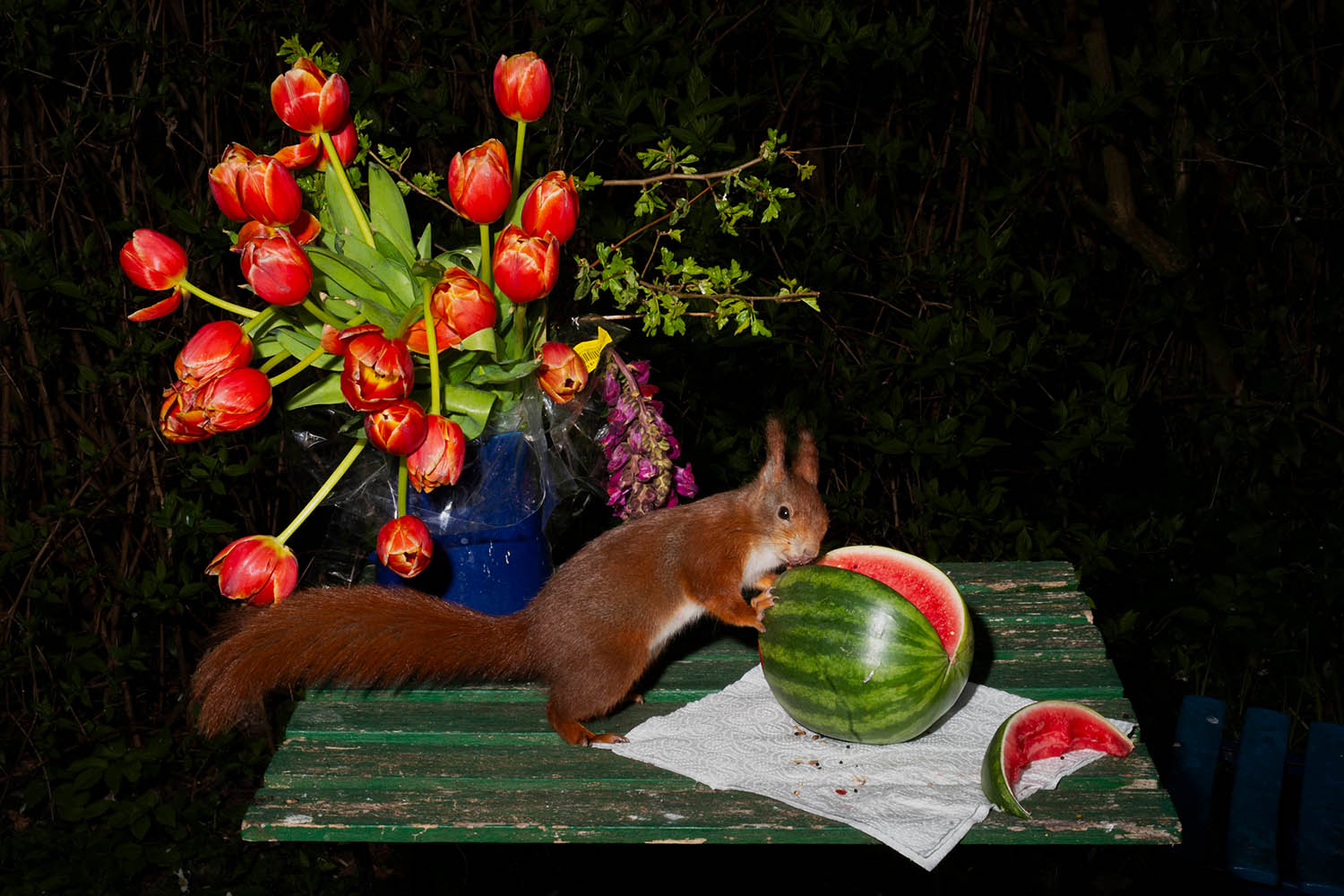It started with a squirrel. The German photographer Lia Darjes had just given birth to her second child and had gone to visit her parents in the countryside during lockdown in 2020.
While breastfeeding and looking idly out into the garden, inspiration struck.
“I saw a squirrel jumping on a table. And I thought, ‘Oh, wow, that’s nice. Maybe I can recreate that.’”
Darjes, who divides her time between Hamburg and Berlin, had been thinking about how to follow up her book Tempora Morte, for which she crafted sumptuous still lifes inspired by market stalls in Kaliningrad, Russia.
For her next project she added an extraneous, unpredictable element into the mix: wild animals.

Every time Darjes visited her parents or her friends, she would place the leftovers from their meals on the garden table, “leaving a potential still life, basically”.
In order to capture the animals in their natural state, undisturbed by human presence, she set up a motion-activated camera to photograph any visitors over the following 24 or 48 hours.
In the beginning, nothing happened, or the photos were of poor quality.
“There was a lot of disappointment,” she recalls. “I had to have a lot of patience, because they are not very reliable, those animals.”
After some trial and error, she created her own makeshift apparatus, replacing the cheap wildlife camera she had been using with her professional camera, which she encased in a Tupperware box with a hole in it to protect it from the rain.
One day she came back to find a clear, striking picture of a crow helping himself to her offerings.
“I thought, ‘That is really something,’” she says. “I was so excited. I felt so lucky that it turned out like that. I felt a little bit like a magician: I could make my fantasy become reality.”

Over the following four springs, she left out flowers, fruit, nuts and drinks, attracting the animals who lived in the vicinity: cats, rats, blue tits, slugs.
Raccoons – of which Berlin has many, following the Second World War bombing of a raccoon farm in Brandenburg, which let the animals escape – are some of the messiest guests, she says.
“In one photo, you can see the raccoons shouting and they have completely destroyed the scenery and thrown the plates off the table.”
The series puts a documentary photography spin on the still lifes of the Dutch Golden Age, with which Darjes has long been fascinated.
“I believe that objects and items tell a lot about human nature.” But, she points out, still lifes have always included animals, often in the form of hunting spoils, but also living creatures.
“When you look at the Old Masters, there are so many. It’s almost a whole genre, where cats steal something from the table, or there are mice or insects.”

Different animals carried their own symbolic resonance, often denoting virtues, vices or religious themes: goldfinches were associated with healing, monkeys with mischief and fish with Christ.
Working on this project, Darjes became more connected to the natural world around her.
“I love that the animals and us share the environment: they’re next to us – they are really our neighbours.” She noticed how the animals’ behaviour was affected by the changing of the seasons, and became familiar with their particular routines: one jay, for example, would show up at exactly the same time every day.
After a while, she learned how to distinguish the different creatures who she had previously only glimpsed in her garden.
“I got to know the animals pretty well,” she says. “I recognise this one squirrel that is just a little bit darker than the others. That’s very beautiful – basically it’s still wild, but I know it’s that animal. I’ve always dreamed of being a companion to a squirrel.”
Plates I-XXXI by Lia Darjes is published by Chose Commune
